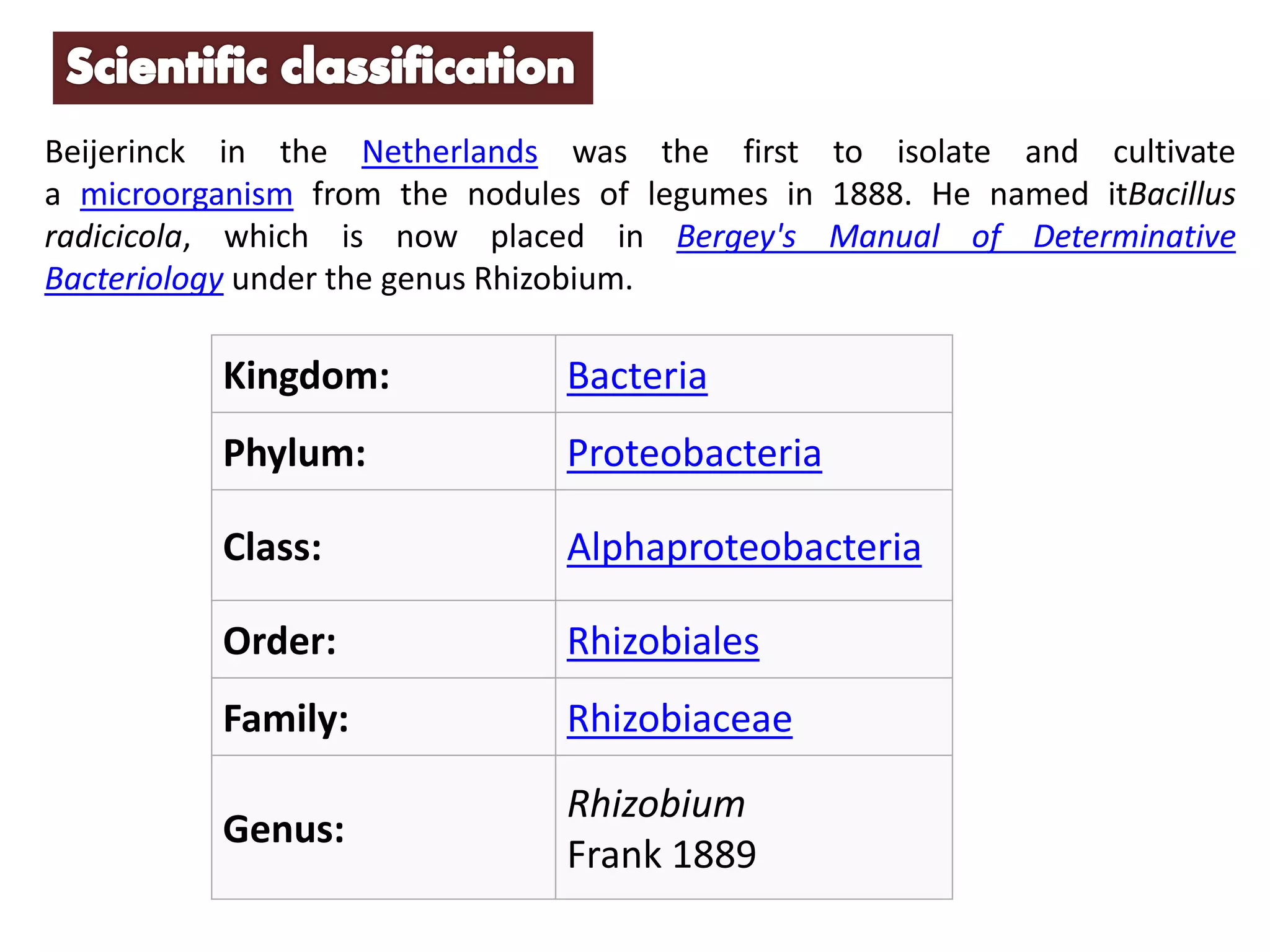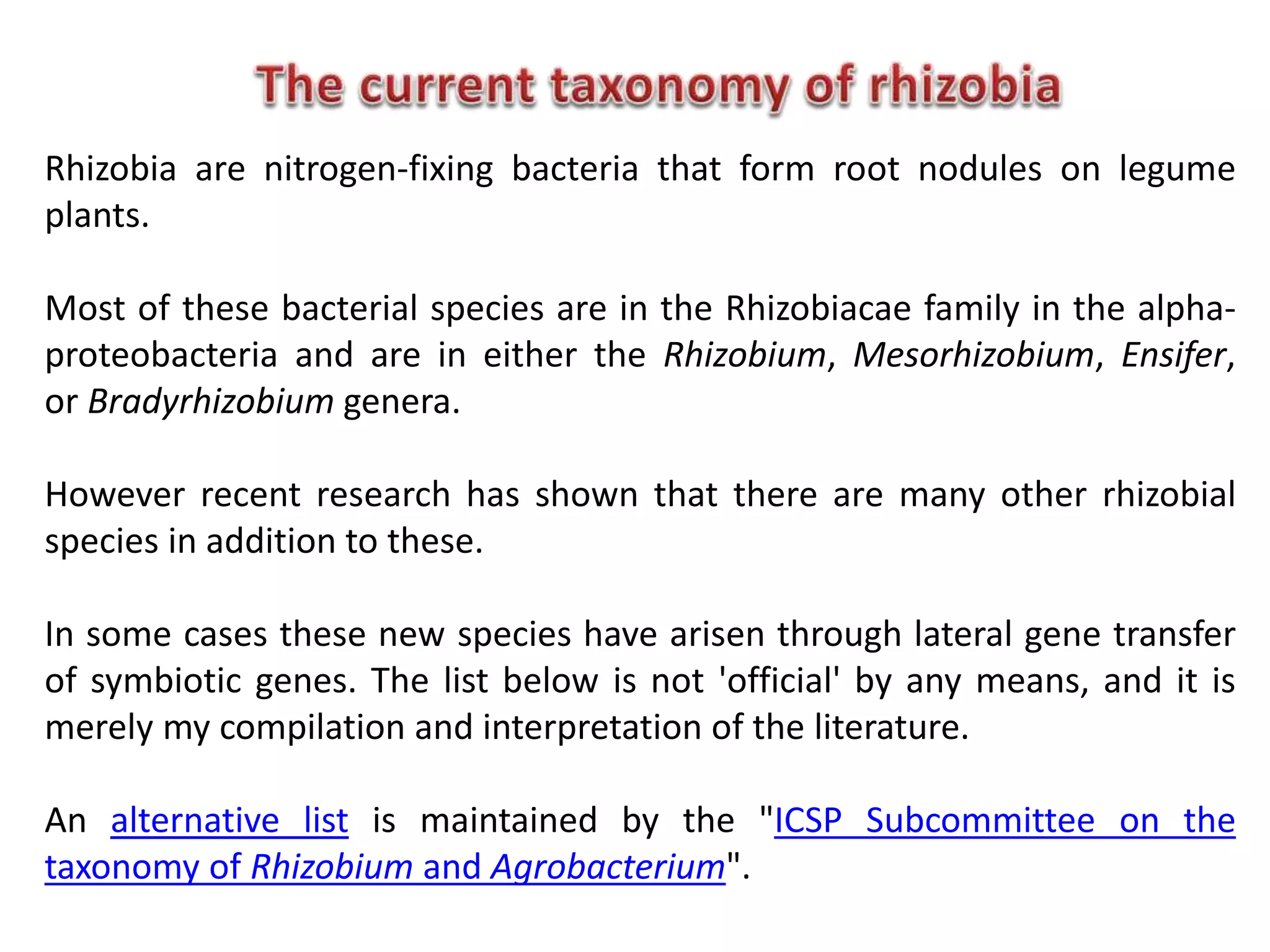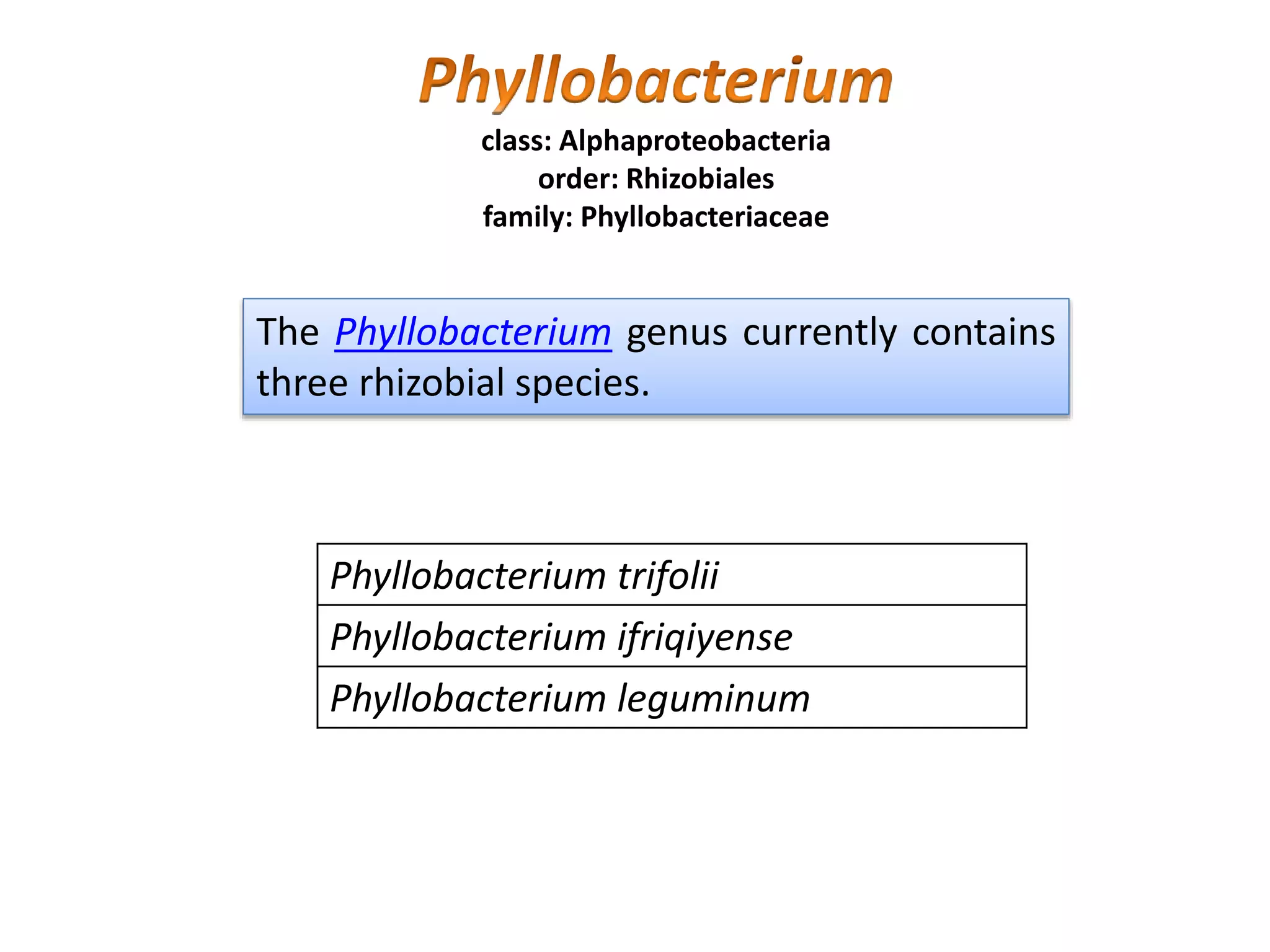Rhizobium is a genus of gram-negative bacteria that form symbiotic relationships with legumes to fix atmospheric nitrogen in root nodules, providing essential nutrients to the plants. The document outlines various genera and species within the Rhizobiaceae family, describing their characteristics, classification, and the beneficial interactions between rhizobia and leguminous plants. It also discusses the formation, structure, and physiology of nitrogen-fixing nodules and the mechanisms of nodulation influenced by both external and internal factors.






















![Legume family
Plants that contribute to nitrogen fixation include the legume family – Fabaceae –
with taxa such as kudzu, clovers, soybeans, alfalfa, lupines, peanuts, and rooibos.
They containsymbiotic bacteria called rhizobia within the nodules, producing
nitrogen compounds that help the plant to grow and compete with other plants.
When the plant dies, the fixed nitrogen is released, making it available to other
plants and this helps to fertilize the soil.
The great majority of legumes have this association, but a few genera
(e.g.,Styphnolobium) do not.
In many traditional and organic farming practices, fields are rotated through
various types of crops, which usually includes one consisting mainly or entirely of
clover or buckwheat (non-legume family Polygonaceae), which are often referred
to as "green manure".
Inga alley farming relies on the leguminous genus Inga, a small tropical, tough-
leaved, nitrogen-fixing tree.[4]](https://image.slidesharecdn.com/rhizobium-160907165142/75/Rhizobium-23-2048.jpg)
![Non-leguminous
Although by far the majority of plants able to form
nitrogen-fixing root nodules are in the legume
family Fabaceae, there are a few exceptions:
•Parasponia, a tropical genus in the Cannabaceae also
able to interact with rhizobia and form nitrogen-fixing
nodules
•Actinorhizal plants such as alder and bayberry can also
form nitrogen-fixing nodules, thanks to a symbiotic
association with Frankiabacteria. These plants belong to
25 genera[6] distributed among 8 plant families.
The ability to fix nitrogen is far from universally present
in these families. For instance, of 122 genera in
the Rosaceae, only 4 genera are capable of fixing
nitrogen. All these families belong to
the orders Cucurbitales, Fagales, and Rosales, which
together with the Fabalesform a clade of eurosids.
A sectioned alder tree
root nodule.](https://image.slidesharecdn.com/rhizobium-160907165142/75/Rhizobium-24-2048.jpg)








![Nodulation is controlled by a variety of processes, both external (heat, acidic
soils, drought, nitrate) and internal (autoregulation of nodulation, ethylene).
Autoregulation of nodulation controls nodule numbers per plant through a
systemic process involving the leaf. Leaf tissue senses the early nodulation
events in the root through an unknown chemical signal, then restricts further
nodule development in newly developing root tissue.
The Leucine rich repeat (LRR) receptor kinases (NARK in soybean (Glycine
max); HAR1 in Lotus japonicus, SUNN in Medicago truncatula) are essential
for autoregulation of nodulation (AON). Mutation leading to loss of function
in these AON receptor kinases leads to supernodulation or hypernodulation.
Often root growth abnormalities accompany the loss of AON receptor kinase
activity, suggesting that nodule growth and root development are
functionally linked. Investigations into the mechanisms of nodule formation
showed that theENOD40 gene, coding for a 12–13 amino acid protein [41], is
up-regulated during nodule formation [3].](https://image.slidesharecdn.com/rhizobium-160907165142/75/Rhizobium-33-2048.jpg)
